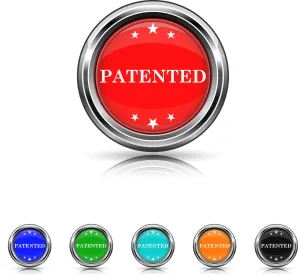The US Patent and Trademark Office (PTO) requested public comments on considerations for instituting trials under the Leahy-Smith America Invents Act (AIA). Comments are due by November 19, 2020.
Patent practitioners have grown accustomed to reviewing the PTO Patent Trial and Appeal Board (Board) administrative guide, precedential or informative opinions, and other published filings and decisions to discern best practices for filing petitions for and defending against inter partes review, post-grant review, covered business method and derivation proceedings before the Board. For example, the latest Board Consolidated Trial Practice Guide (Nov. 2019) (CTPG) is available here. The PTO is considering codifying or modifying its current policies and practices through formal rulemaking and wishes to gather public comments on its current approach and other approaches suggested by stakeholders.
PTO policies and Board decisions such as General Plastic, Valve Corp. I, Valve Corp. II, NHK Spring and Fintiv set forth factors for analyzing whether to institute an AIA proceeding (and particularly a follow-on or serial petition) or issue a discretionary denial due to the timeline for parallel district court proceedings. Many of these policies and cases are also discussed in the CTPG. The PTO already has received input from stakeholders on these policies that expand on the PTO director’s discretionary authority to institute an AIA trial. Most stakeholder comments suggested that the case-specific analysis outlined in precedential opinions and the CTPG achieves the appropriate balance and reduces gamesmanship—for example, by ensuring that AIA proceedings do not create excessive costs and uncertainty for the patent owner or the system, while allowing meritorious challenges to patents to be heard. However, some stakeholders have proposed that the PTO adopt brightline rules, regardless of the case-specific circumstances, to:
-
Use its discretion to preclude claims from being subject to more than one AIA proceeding
-
Permit more than one AIA proceeding only if the follow-on petitioner is unrelated to the prior petitioner
-
Place no limits on the number of petitions that can be filed or the number of AIA trials that can be instituted against the claims of a patent, so long as the petition complies with statutory timing requirements and the institution threshold of showing that at least one claim of the patent is unpatentable
-
Preclude institution of an AIA trial against challenged claims if the patent owner opposes institution and a related district court or US International Trade Commission (ITC) action (in which any of the challenged claims are or have been asserted against the petitioner, the petitioner’s real-party-in-interest or a privy of the petitioner) is unlikely to be stayed
-
Eliminate any consideration of the status of any district court or ITC actions involving the challenged patent, so long as the petition complies with statutory timing requirements and the institution threshold.
These contrasting views prompted the PTO to issue a request for comments on the factors that should be considered as part of a balanced assessment of the relevant circumstances when exercising its discretion to institute an AIA trial. The PTO indicated that it welcomes comments on any issues relevant to these topics, but is particularly interested in answers to the specific questions below, which were provided as a “preliminary guide to aid the USPTO in collecting relevant information to assist in modifications, if any, to its current practices, and in the development of any possible rulemaking on this subject.”
Serial Petitions
-
Should the Office promulgate a rule with a case-specific analysis, such as generally outlined in General Plastic, Valve I, Valve II and their progeny, for deciding whether to institute a petition on claims that have previously been challenged in another petition?
-
Alternatively, in deciding whether to institute a petition, should the Office (a) altogether disregard whether the claims have previously been challenged in another petition, or (b) altogether decline to institute if the claims have previously been challenged in another petition?
Parallel Petitions
-
Should the Office promulgate a rule with a case-specific analysis, such as generally outlined in the Consolidated Trial Practice Guide, for deciding whether to institute more than one petition filed at or about the same time on the same patent?
-
Alternatively, in deciding whether to institute more than one petition filed at or about the same time on the same patent, should the Office (a) altogether disregard the number of petitions filed, or (b) altogether decline to institute on more than one petition?
Proceedings in Other Tribunals
-
Should the Office promulgate a rule with a case-specific analysis, such as generally outlined in Fintiv and its progeny, for deciding whether to institute a petition on a patent that is or has been subject to other proceedings in a U.S. district court or the ITC?
-
Alternatively, in deciding whether to institute a petition on a patent that is or has been subject to other proceedings in district court or the ITC, should the Office
(a) altogether disregard such other proceedings, or
(b) altogether decline to institute if the patent that is or has been subject to such other proceedings, unless the district court or the ITC has indicated that it will stay the action?
Other Considerations
7. Whether or not the Office promulgates rules on these issues, are there any other modifications the Office should make in its approach to serial and parallel AIA petitions, proceedings in other tribunals, or other use of discretion in deciding whether to institute an AIA trial?



 />i
/>i

